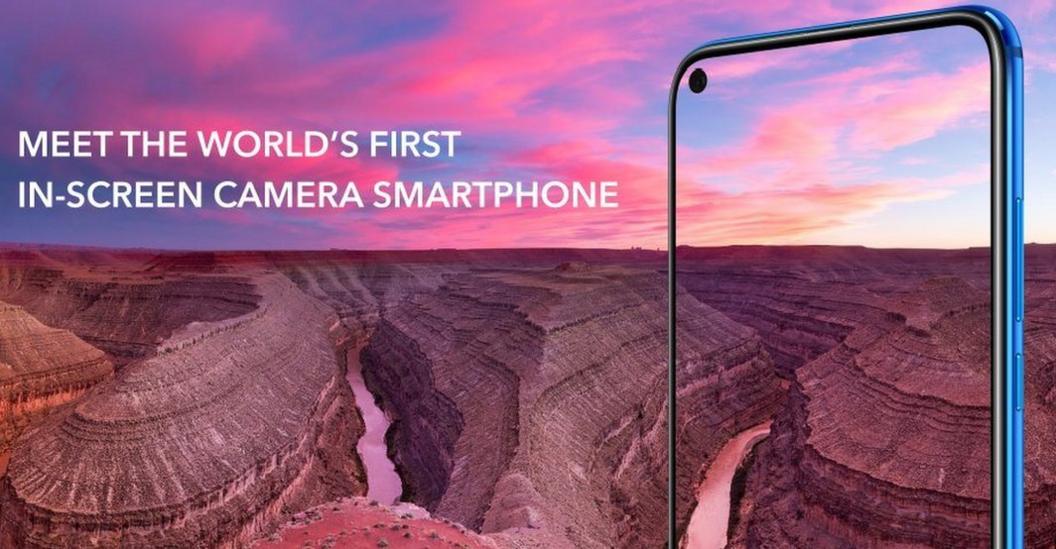Huawei Honor View20 and Samsung A8s have hole-punch cameras
- Published

The Honor View20 was unveiled in Hong Kong
Two smartphone-makers have unveiled handsets featuring a "hole-punch" selfie camera.
The screens of the Samsung A8s and Huawei Honor View20 both feature a small circular space for the component.
The design is intended to be less obtrusive than a "notch" - as popularised by Apple and later by many Android smartphone manufacturers.
One expert said the innovation highlighted how competitive the market for mid-range devices had become.
'World first'
Both Samsung and Huawei claimed to be first to launch the notchless camera design.
The Chinese company may have slightly edged out its rival by unveiling its device at an event in Hong Kong a few hours before Samsung's launch.
But the South Korean company had previously hinted at the screen-engineering feat by showing off a line drawing of the feature in November.
Samsung's Infinity-O screen design features a hole-punch selfie camera
Neither handset features the kind of facial identification sensors that spurred Apple to introduce a notch in the first place.
One industry-watcher said the phones instead represented mid-range devices, which made them a good match for the new look.
"Huawei is relentless at using the Honor brand to really grab as much share in the marketplace as possible," said Ben Wood, from the consultancy CCS Insight,
"This is a very important part of the market, particularly for Samsung with the professional pressure it is facing from Huawei."
Samsung was the world's most successful smartphone brand in the July-to-September quarter, when it shipped 72.2 million units, .
Huawei came second, according to the same report, with 52 million devices shipped over the same period.
The Asus ZenFone 5 features a typical notch design for its selfie camera
But both companies face challenges.
Samsung has lost substantial market share in the mid- and lower-tiers to Chinese rivals over the past year, while Huawei faces claims it broke US sanctions on Iran and poses a wider security threat to the West.
Huge camera
Huawei also claimed the Honor View20's main camera, on its rear, represents another world-first.
It offers a resolution of 48 megapixels and is the first to use of a sensor made by Sony that was announced in July.
The benefit is that users can crop in more closely into their photos without risking them looking pixellated when printed out. But the downside is that higher-resolution shots take up more storage space.
Xiaomi has also indicated it will soon launch a handset with the same sensor.
Samsung previously announced it had created its own 48MP sensor but has yet to reveal in which handset it will debut.
- Published9 December 2018
- Published3 December 2018